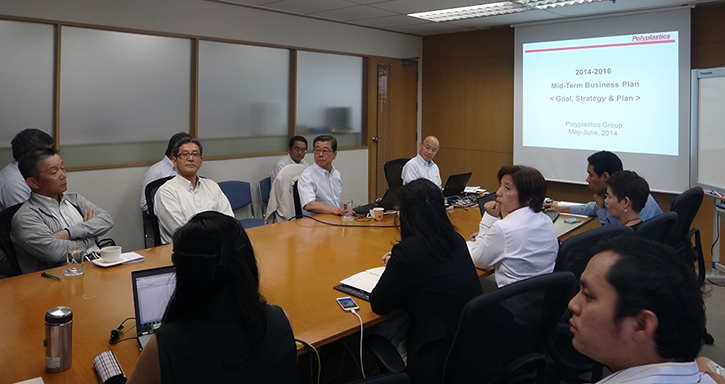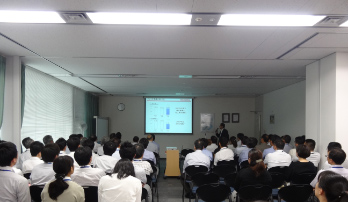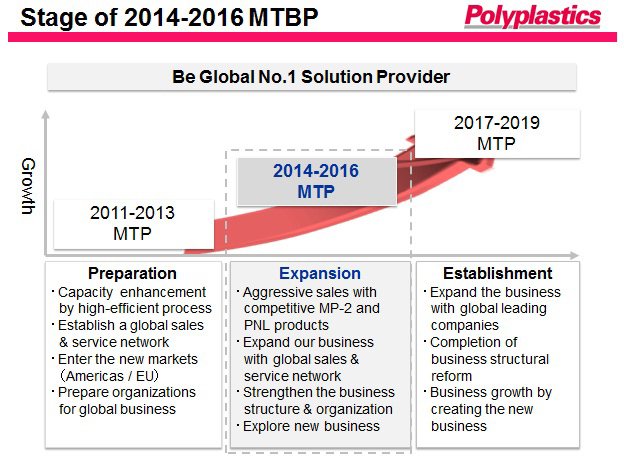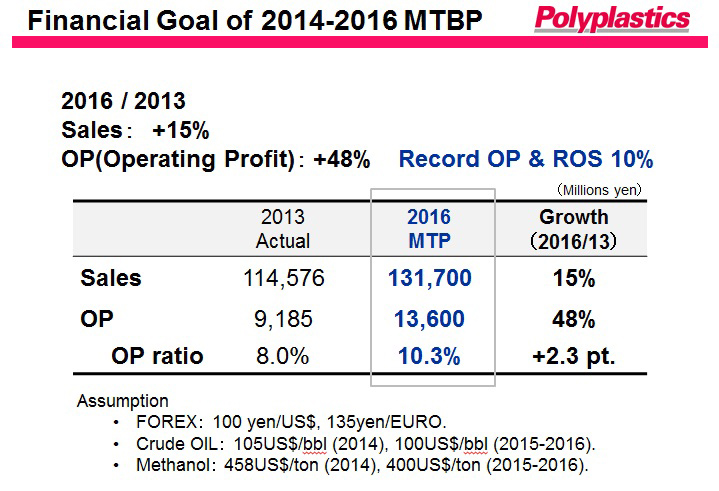
Half a year has passed since the midterm business plan, which sets the company’s course for FY2014-FY2016, was drawn up in April.
The business units in the group companies are now moving ahead with work and work planning in connection with the midterm business plan.
Town Meetings have already been held at many of business bases, but P-Mates would like to review the key points of the midterm business plan once more so that we all have a better awareness of it.
What is the midterm business plan?
Are there any of you who have never heard “midterm business plan” before?
At the Town Meeting in Tokyo, Senior Managing Executive Officer Ryuichi Sekita explained the term in a way that was easy for everyone to understand.
“The midterm business plan is a very important corporate business plan that determines the direction the company will take, the policies it will implement, and the business activities it will carry out over the next three years. It is linked with the midterm plans of each division and department, and at the most basic level with the work plans of each individual employee.” (Mr.Sekita)
How is the midterm business plan for 2014-2016 positioned?
It’s fair to say that by 2013, our production and supply systems and sales bases that form the foundation of the Polyplastics business have been completed.
The next three years will be a period in which we produce major results that propel the next wave of growth. (↓Click to enlarge the image)
What is required to become the global No.1 solution provider?
2011-2013 Period of preparation for growth
2014-2016 Utilize investments made and organization structures formed in the preparation period to achieve business expansion
2017-2019 Advance to establish the company’s position as the global No.1 solution provider
What goals and objectives does the current midterm business plan set?
The goals of the plan・・・
The current midterm business plan sets goals such as "Achievement of a 10% operating profit margin" and establishment of a system to maintain this margin.
Although preconditions are likely to change due to variables such as exchange rates, the company has announced that the goal of achieving a 10% operating profit margin is a policy that will not be changed.
◆Sales +15%, Operating Profit +48%・・・
To achieve the goals set for 2016, both sales and operating profit need to grow significantly.
Sales must grow by a rate of 15% and operating profit by a rate of 48% compared with the
figures for sales and operating profit in 2013.
Achievement of the above growth rates will enable achievement of a 10% operating profit
margin.
The objective of the plan・・・
The objective of the midterm business plan is to build a global business system that is appropriate
for the No.1 engineering plastics solutions provider.

Specifically, this will involve strengthening our relationships with key customer accounts and securing our position as the “best partner.”
Also, it will mean continued growth by establishing a business structure that is competitively strong in general markets.
A specific target of 10% ROS has been set to be achieved by these means in FY2016.
ROS (return on sales) is the percentage of operating profit on sales. It is used as an index to determine a company’s earning capacity.
What basic strategies are necessary to achieve this goal…?
Strategies in all areas of business are presented in the current midterm business plan including marketing and market development, business construction and support, development of new businesses and research and development, and construction of a global supply system.
Each of these basic strategies will be introduced in the next issue of P-Mates.
<<Key numbers>>
◆114.6 billion yen → 131.7 billion yen
Sales of 114.6 billion yen in 2013 exceeded the record high in 2007.
However, the current midterm plan sets a target of 131.7 billion yen, which exceeds sales in 2013 by 15%.
◆57% of Polyplastics sales
In 2016, sales in countries other than Japan will account for 57% of Polyplastics’ total sales and this percentage is expected to increase in the future.
The Polyplastics business is becoming increasingly global. The business operations of each of our group companies are no longer targeted only at local customers and employees (colleagues and other members).
The staff members in each group company must not only be looking at the country or region where they are located, but bring a global perspective to all of the business activities they undertake.
◆China, 4% and 6%
These percentages are the company’s shares of the PBT and PPS markets in China. We have a 25% share of the POM market and a 39% share of the LCP market in China.
Strengthening of Polyplastics’ PBT and PPS businesses overseas, including in China, will be essential for company growth.

